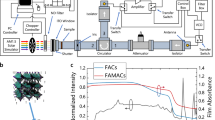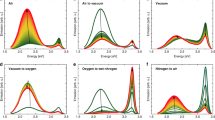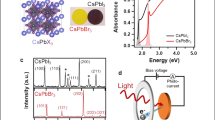Abstract
FROM early experiments on the photo-conductivity of zinc-blende, Gudden and Pohl1 deduced that the current must be transported by two kinds of carrier, and according to present-day theory these must be electrons and positive holes—vacant places left in a normally full electron energy band when an electron is ejected. While electrons are liberated by blue light, positive holes do not become mobile until a subsequent illumination by light of longer wave-length, for example red or infra-red, but the reason for this need not be discussed here.
This is a preview of subscription content, access via your institution
Access options
Subscribe to this journal
Receive 51 print issues and online access
$199.00 per year
only $3.90 per issue
Buy this article
- Purchase on Springer Link
- Instant access to full article PDF
Prices may be subject to local taxes which are calculated during checkout
Similar content being viewed by others
References
Gudden, B., “Lichtelektrische Erscheinungen” (Springer, 1928).
Antonow-Romanowsky, W. W., Sow. Phys., 7, 366 (1935).
Author information
Authors and Affiliations
Rights and permissions
About this article
Cite this article
REIMANN, A. Photo-conductivity and Phosphorescence of Zinc-blende. Nature 140, 501–502 (1937). https://doi.org/10.1038/140501b0
Issue Date:
DOI: https://doi.org/10.1038/140501b0
Comments
By submitting a comment you agree to abide by our Terms and Community Guidelines. If you find something abusive or that does not comply with our terms or guidelines please flag it as inappropriate.



